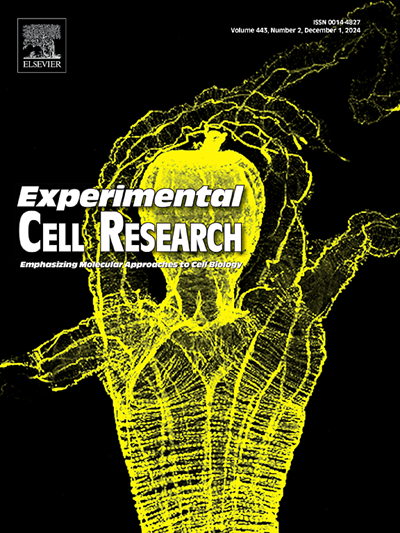PD98059 inhibit the proliferation and differentiation of osteoblasts in the formation of tympanosclerosis via ERK1/2-MAPK signaling pathway
IF 3.3
3区 生物学
Q3 CELL BIOLOGY
引用次数: 0
Abstract
Tympanosclerosis (TS) has become a common pathological condition of the middle ear, but the underlying mechanism of it is still ambiguous. It was found that osteoprotegerin/receptor activator of nuclear factor kappa B ligand (OPG/RANKL) axis played an important role in the development of TS and was regulated by the extracellular signal regulated kinase 1/2-mitogen activated protein kinase (ERK1/2-MAPK) pathway. However, whether ERK1/2-MAPK pathway mediates the occurrence of TS by regulating OPG/RANKL axis has not been reported. In this study, MAPK and calcium pathway were found significantly activated in TS model. In vivo, the expression of p-ERK1/2 in TS model was significantly increased. In vitro, osteoblasts were isolated from auditory vesicles of neonatal rats for the first time, and then cultured with ERK1/2-MAPK pathway inhibitor PD98059. As results, PD98059 showed inhibitory effects on the phosphorylation of ERK1/2 and proliferation of osteoblasts. Besides, different concentrations of PD98059 showed different inhibitory effects on mRNA expression of osteocalcin (Ocn), bone sialoprotein (Bsp), runt-related transcription factor 2 (Runx2), bone morphogenetic protein 2 (Bmp2) and OPG. Therefore, it was speculated that the ERK1/2-MAPK pathway may affect the formation of TS by regulating the proliferation and differentiation of osteoblasts, which may be helpful for the study of drug target for tympanosclerosis.
PD98059通过ERK1/2-MAPK信号通路抑制成骨细胞增殖和分化形成鼓膜硬化。
鼓膜硬化(Tympanosclerosis, TS)已成为中耳常见的病理症状,但其发病机制尚不明确。研究发现,骨保护素/核因子κ B配体受体激活因子(OPG/RANKL)轴在TS的发生发展中起重要作用,并受细胞外信号调节激酶1/2-丝裂原活化蛋白激酶(ERK1/2-MAPK)通路的调控。然而,ERK1/2-MAPK通路是否通过调控OPG/RANKL轴介导TS的发生尚未见报道。本研究发现,MAPK和钙通路在TS模型中显著激活。在体内,p-ERK1/2在TS模型中的表达明显升高。体外首次从新生大鼠听觉囊泡中分离成骨细胞,用ERK1/2-MAPK通路抑制剂PD98059培养成骨细胞。结果表明,PD98059对ERK1/2磷酸化和成骨细胞增殖具有抑制作用。此外,不同浓度的PD98059对骨钙素(Ocn)、骨唾液蛋白(Bsp)、矮子相关转录因子2 (Runx2)、骨形态发生蛋白2 (Bmp2)和OPG mRNA表达有不同的抑制作用。因此,我们推测ERK1/2-MAPK通路可能通过调节成骨细胞的增殖和分化来影响TS的形成,这可能有助于研究鼓膜硬化的药物靶点。
本文章由计算机程序翻译,如有差异,请以英文原文为准。
求助全文
约1分钟内获得全文
求助全文
来源期刊

Experimental cell research
医学-细胞生物学
CiteScore
7.20
自引率
0.00%
发文量
295
审稿时长
30 days
期刊介绍:
Our scope includes but is not limited to areas such as: Chromosome biology; Chromatin and epigenetics; DNA repair; Gene regulation; Nuclear import-export; RNA processing; Non-coding RNAs; Organelle biology; The cytoskeleton; Intracellular trafficking; Cell-cell and cell-matrix interactions; Cell motility and migration; Cell proliferation; Cellular differentiation; Signal transduction; Programmed cell death.
 求助内容:
求助内容: 应助结果提醒方式:
应助结果提醒方式:


